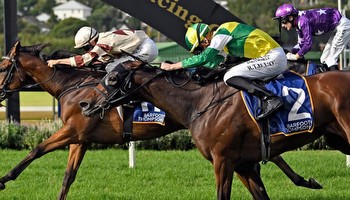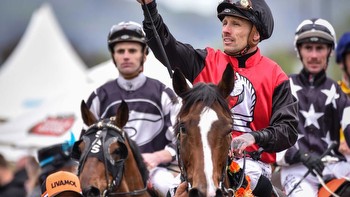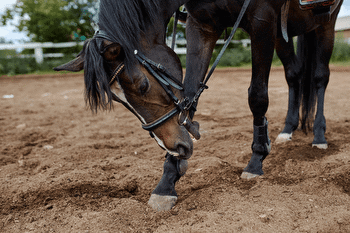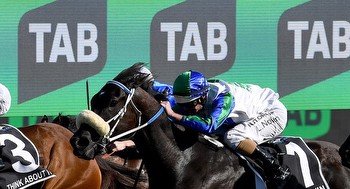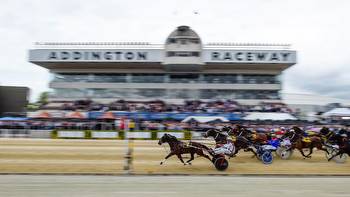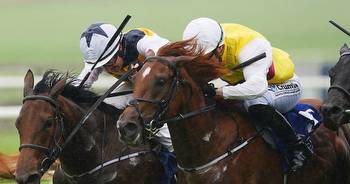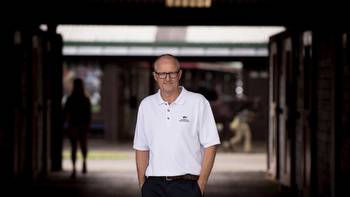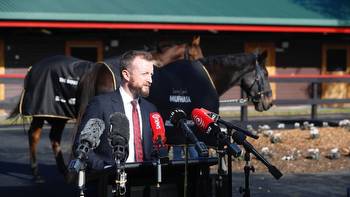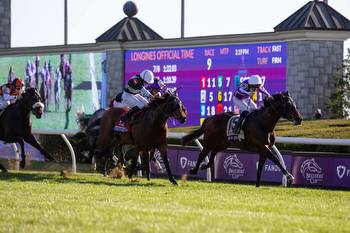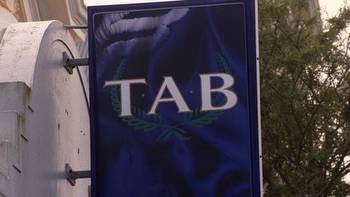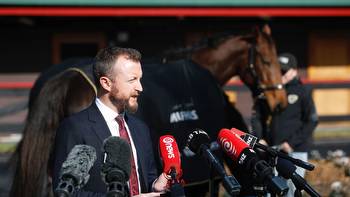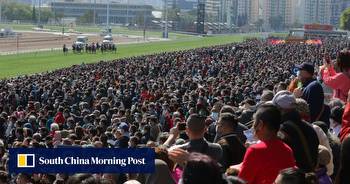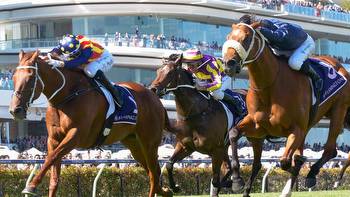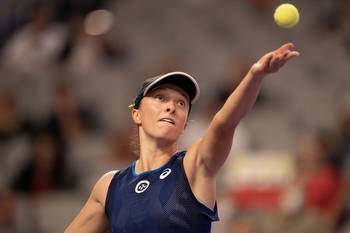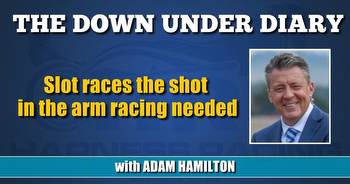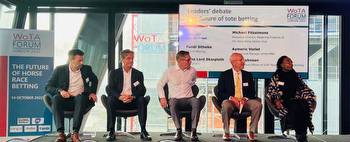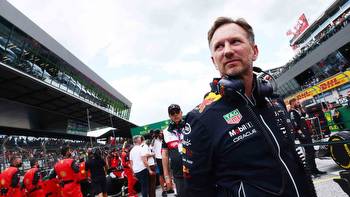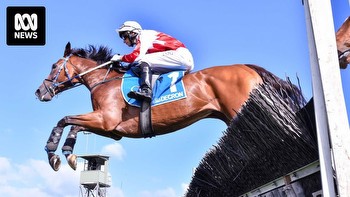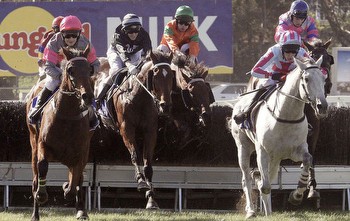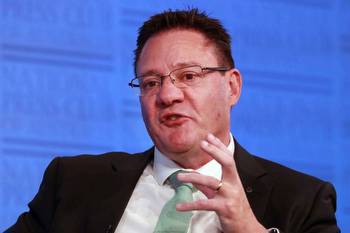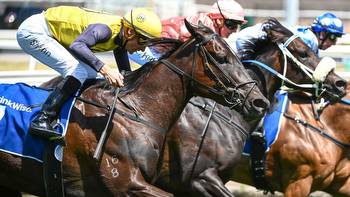Why racing needs to sell its stars better to thrive as an industry
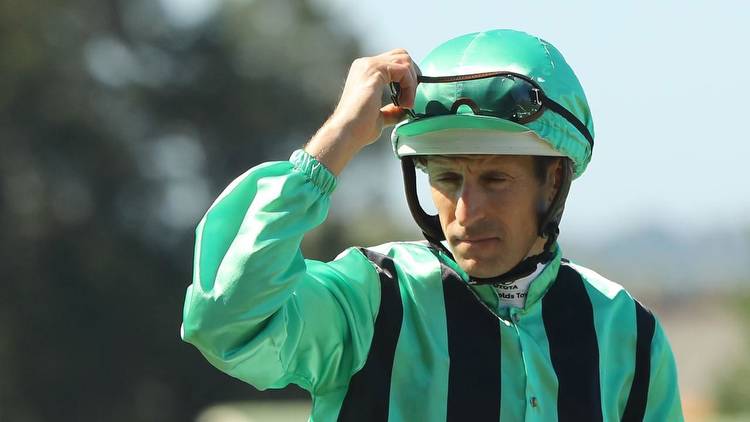
It was only a few weeks ago that respected columnist and noted author Peter FitzSimons posted a rather vacuous tweet suggesting he'd never heard of James McDonald, sometimes rated the world's top jockey.
FitzSimons has researched enough to deliver lengthy and impressive tomes on Australian history around the likes of Tobruk, Kokoda, Batavia, Eureka, Ned Kelly, Gallipoli, Long Tan, the Sydney Opera House and much more, including knowledge on how to wear a red bandana.
Despite acknowledging via Twitter that he had no or little interest in racing, he suggested that 20 years ago he could have named "several jockeys".
"Now, none," he tweeted. "And I've never heard of this un."
Let that slide, though I could mention I grew up in a rugby playing school in the Campese era with the Ella Brothers and savoured the exploits of John Eales, Nick Farr Jones, Lynagh, Gregan, Horan, yet would sadly struggle to name a current Wallaby (let alone excruciatingly burden myself to watch a modern day scrum while thinking cauliflowers were so much more for eating than player's ears).
It is not really my point here though but FitzSimons' observation comes into it.
— Peter FitzSimons (@Peter_Fitz) March 14, 2023
News Corp last week published a copious list of the Top 50 "Most marketable Australian Sports Stars" based on strenuously tested criteria across three tiers: Personal Brand Strength, Audience and Reach and Economics before those were broken down via authenticity, risk factor, performance, a social media reach, google search and relevance and then market demand and growth potential. Or dollars as bottom line.
Rugby players Peter? Zero. Zilch.
But then nor was there a star from racing anywhere near that list. And this is the start of my point.
Racing boasts it's a big industry, and it is, $9.5b of economic contributions to the country (however that is measured), 75,000 full time jobs provided, 160,000 participants, 20,000 plus volunteers and of course a wagering baseline of an ever growing $30b which helps provide some $850m in stakes money for the one in 250 Aussies who share in ownership.
So then where is the cut through to mainstream Australia, like where Australian cricket captain Pat Cummins led that list from global soccer star Sam Kerr and the rising star of the NBA in Josh Giddey. Tennis players, golfers, swimmers, AFL and NRL stars, BMX champs, skateboarders, surfers and UFC brawlers all made the list.
This is not a criticism of racing in any way, it's more an observation of priorities and how best "selling" the sport and its players, at perhaps a never more vital time as social licence hovers across numerous grounds like wagering and equine welfare. And relevance.
Some of our top athletes didn't make the list, including Hugh Bowman. Picture: Jeremy Ng – Getty Images
What other sport for example is primarily funded by its fans who come with a government warning attached to it (even more so now when "Gamble Responsibly" is replaced by "You win some, you lose more" or the more confronting "the chances are you are about to lose"). Hardly suggests to any new enquirer to get involved does it, but there is a reason why we already do.
And you don't have to go back that far to recall the tobacco industry from its place on the all sport's partnership stage compared to where it is now, or isn't.
Add to that the community pressures highlighted in a recent study by analytics firm "Nature" following Reserve Bank interest rate increases that revealed 81% with personal loans, 78% with car loans and 14% with mortgage rates had been cutting cuts already, dining out, takeaway foods, holidays and entertainment first to go, so what of the discretional spend on gambling or owning a horse?
Melbourne's "Festival of Racing", has already come and gone, with almost a call for setting up a Royal Commission into recent jockey's falls (as concerning as they are to be sure and well covered on this site), seemingly more headline grabbing than a Rachel King Group 1 win or Gai Waterhouse continuing to make headlines for that matter (she's got the first two favourites for the Melbourne Cup – in March).
If racing does have a greater selling point more than any other sport, perhaps it is something as simple, if not dumbed down as this – racing has males and females competing for equal pay both on and off the track as jockeys, trainers, without any age limits, and such stories aren't that well told or shared (on the grander scale that is).
It is not "the sport of Kings". Well not in Australia anyway.
Pony races at the track are cute and a way to show on racing's television coverage an inclusion or let's pinch a modern-day term "pathway" from equestrian to the sport, but again that is not getting us there.
So, whose job, is it? It's a rhetorical question for here. But worth discussing.
Think, as supposedly celebrities you may never heard much of, lob into Melbourne for the Australian Formula 1 Grand prix this weekend, of the state of that sport not a decade ago.
"I'd rather get the 70-year-old guy who's got plenty of cash. So there's no point trying to reach these kids," said it's CEO (Bernie Ecclestone) before a momentous shift and change in public attitude and engagement.
Then a company called Liberty Media bought F1 in 2016, now no one is suggesting racing is sold as an industry, we can't even sort a national TAB, so move on, but for their $301m investment of a $4.6b acquisition deal, their first stop was position themselves as a "content company".
So you've watched "Drive To Survive" on Netflix right.
Originally the sports two biggest teams, Mercedes and Ferrari refused to participate, Red Bull, basically an energy drinks company, got it (and had the marketable Daniel Riccardo) to participate in the first series, now the tensions and inner workings are laid bare and the sport has never been stronger or engaged with new customers and consumers and marketplace than now.
Since Drive To Survive launched in 2019, there has been a 40% increase in US viewership, F1 valuation has gone from $8b to $17b and there has been 73m new fans generated.
"In a sport where drivers wear helmets, seeing their faces and personalities drives more affinity for new fans."
"Cadillac, Porsche, Audi and Ford are among the car companies now trying to burst into F1, sponsorship is booming, and the existing 10 race teams are estimated to be worth billions more collectively than in the pre-Drive to Survive era."
Racing has tinkered a little into the reality field. Brilliant but chequered jockey Oisin Murphy featured alongside trainer Andrew Balding in the UK four-part series for Amazon Prime called "Horsepower" before Murphy's drug taking ban but included all the juicy and real behind the scenes plays, you'd want to know even if you didn't.
And you may have read here at Racenet about Jamie Kah's involvement in a behind the scenes "All-Star Mile" based documentary "Miles In Front" produced by industry partners Ladbrokes through the Entain Group in conjunction with Racing Victoria, though obviously impacted by Kah's untimely injury. But still, what a story, and still in the doing.
Entain has been smart enough to read the room. Content will become their king where advertising and offering $50 money back for their losing punters who dribbled 2nd, 3rd and fourth are long gone. The Glen Boss "Bucket List" series project is prime example.
Elsewhere punters, primarily young males, are being presented as complete mugs, let's say a little sheep like moronic, as racing allows its partners to suggest that as the norm and not its best or even aspirational.
You will see jockeys or some trainer with a Mercedes from (insert dealership here) but that's simply contra work, and good if you can get it. But let's get real, racing needs to let its stars be able to and allowed to attract new partnerships, sponsors if you like, if the sport wishes to grow better relationships.
Back to Red Bull, imagine if they had a thoroughbred team, if they could get their heads around the opportunities of a sport that offers so many but seemingly can't deliver.
Re: some research from Forbes, Red Bull's F1 ownership has created a $300m+ brand exposure: "That‘s a 2x return on investment and Red Bull owns the underlying asset (rather than ad money that is just a one-time thing). Even more than brand exposure, Red Bull Racing creates history, which ultimately reduces customer acquisition costs.
Fandom is heritable through generations
Winning creates mythology around product
Constant exposure creates deep affection
These three dot points are perhaps absolutely aspirational for transitioning racing from a perceived wagering only sport where the thought of animals being whipped is not just wrong, but much better explained. Sustainability.
Another pillar of the energy drink empire is Red Bull Media (including Red Bull TV) that "houses more than 600 sports events, documentaries and factual entertainment as well as scripted series and feature films, and which is often held up as the quintessential content factory."
Racing has a huge well of content available and participants bursting with stories, something I have tried to share in this column over recent years.
One of my heroes, Damon Runyon, wrote plenty, but of Unser Fritz in "All Horse Players Die Broke", tells the tall of the 75-year-old ready Dutchman "come next grass" and enter Emerald Em and Willy The Worrier, and a horse called Cara Mia and perhaps you factor in the rest of a Runyon play, but the horse, like Unser finishes out of the money and he is back being "the bum' he was always thought of.
To which Unser says: "that is racing".
But no, there is so much more than that, and now is the time to tell it. So much better.

